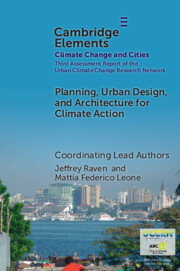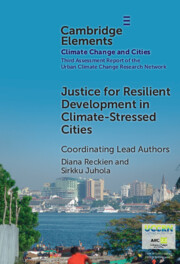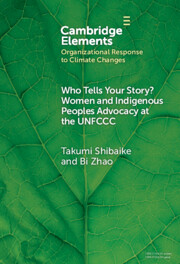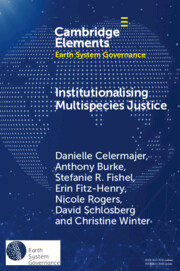Refine search
Actions for selected content:
80 results
Civil Anarchizing for the Common Good: Culturally Patterned Politics of Legitimacy in the Climate Justice Movement
-
- Journal:
- Voluntas: International Journal of Voluntary and Nonprofit Organizations / Volume 30 / Issue 2 / April 2019
- Published online by Cambridge University Press:
- 01 January 2026, pp. 327-341
-
- Article
- Export citation
Disrupting the Anthropocene: Temporalities of Mourning and Care in the Postapocalyptic Present
-
- Journal:
- Democratic Theory / Volume 12 / Issue 2 / December 2025
- Published online by Cambridge University Press:
- 01 January 2026, pp. 83-104
-
- Article
-
- You have access
- Open access
- HTML
- Export citation
Navigating “Simplexity” in the Anthropocene: Environmental Education for Teachers in Times of Metacrisis
-
- Journal:
- Australian Journal of Environmental Education , First View
- Published online by Cambridge University Press:
- 22 December 2025, pp. 1-17
-
- Article
-
- You have access
- Open access
- HTML
- Export citation
Education and Governance for Justice with Martuwarra, and the Greater Good
-
- Journal:
- Australian Journal of Environmental Education , First View
- Published online by Cambridge University Press:
- 19 December 2025, pp. 1-15
-
- Article
-
- You have access
- Open access
- HTML
- Export citation
Entangled harms: A reparative approach to climate justice
-
- Journal:
- Leiden Journal of International Law , First View
- Published online by Cambridge University Press:
- 21 November 2025, pp. 1-22
-
- Article
-
- You have access
- Open access
- HTML
- Export citation

Planning, Urban Design, and Architecture for Climate Action
-
- Published online:
- 05 November 2025
- Print publication:
- 11 December 2025
-
- Element
-
- You have access
- Open access
- HTML
- Export citation
1 - Introduction: Monitoring the Impact
-
- Book:
- From Crisis to Action
- Published online:
- 15 August 2025
- Print publication:
- 04 September 2025, pp 1-27
-
- Chapter
-
- You have access
- Open access
- HTML
- Export citation
7 - Politicizing Financial Innovations for Transformative Climate Justice
- from Part II - Political Economy
-
-
- Book:
- Stability and Politicization in Climate Governance
- Published online:
- 07 August 2025
- Print publication:
- 21 August 2025, pp 99-112
-
- Chapter
-
- You have access
- Open access
- HTML
- Export citation
Itamar Mann, lifeboats and climate politics: An introduction
-
- Journal:
- Global Constitutionalism , First View
- Published online by Cambridge University Press:
- 12 August 2025, pp. 1-3
-
- Article
-
- You have access
- Open access
- HTML
- Export citation
20 - Conclusion
- from Part IV - Liability and Evidence
-
-
- Book:
- The Cambridge Handbook on Climate Litigation
- Published online:
- 03 June 2025
- Print publication:
- 31 July 2025, pp 498-506
-
- Chapter
-
- You have access
- Open access
- HTML
- Export citation
Governance of Carbon Dioxide Removal: Practitioners’ Perspectives on Fairness and Equity
-
- Journal:
- European Journal of Risk Regulation , First View
- Published online by Cambridge University Press:
- 31 July 2025, pp. 1-11
-
- Article
-
- You have access
- Open access
- HTML
- Export citation

Justice for Resilient Development in Climate-Stressed Cities
-
- Published online:
- 12 June 2025
- Print publication:
- 10 July 2025
-
- Element
-
- You have access
- Open access
- HTML
- Export citation
7 - Fictions for a Future: ‘The Families We Choose’ in a Context of Ecosystem Collapse
-
- Book:
- Economics and the Family
- Published online:
- 08 May 2025
- Print publication:
- 05 June 2025, pp 260-270
-
- Chapter
- Export citation
58 - Climate Change
- from Part IV - Challenges for Constitutional Democracy
-
-
- Book:
- The Cambridge Handbook of Constitutional Theory
- Published online:
- 27 March 2025
- Print publication:
- 24 April 2025, pp 1034-1052
-
- Chapter
- Export citation
Why We Should Support Carbon Prices
-
- Article
-
- You have access
- Open access
- HTML
- Export citation
7 - Searching for Shelter in the Climate Crisis Era: Ecocide and Migration
-
-
- Book:
- Ecoviolence Studies
- Published online:
- 13 February 2025
- Print publication:
- 20 February 2025, pp 121-138
-
- Chapter
- Export citation
10 - The Reckoning
-
- Book:
- American Grasslands
- Published online:
- 06 February 2025
- Print publication:
- 13 February 2025, pp 165-185
-
- Chapter
- Export citation

Who Tells Your Story?
- Women and Indigenous Peoples Advocacy at the UNFCCC
-
- Published online:
- 07 February 2025
- Print publication:
- 13 February 2025
-
- Element
- Export citation

Institutionalising Multispecies Justice
-
- Published online:
- 29 January 2025
- Print publication:
- 27 February 2025
-
- Element
-
- You have access
- Open access
- HTML
- Export citation
Need For Fairness In Climate Change Negotiations: A Third World Perspective
-
- Journal:
- Asian Journal of International Law / Volume 15 / Issue 1 / January 2025
- Published online by Cambridge University Press:
- 07 February 2025, pp. 157-189
- Print publication:
- January 2025
-
- Article
- Export citation
